Silencing of natural transformation by an RNA chaperone and a multitarget small RNA
- PMID: 27432973
- PMCID: PMC4978251
- DOI: 10.1073/pnas.1601626113
Silencing of natural transformation by an RNA chaperone and a multitarget small RNA
Abstract
A highly conserved DNA uptake system allows many bacteria to actively import and integrate exogenous DNA. This process, called natural transformation, represents a major mechanism of horizontal gene transfer (HGT) involved in the acquisition of virulence and antibiotic resistance determinants. Despite evidence of HGT and the high level of conservation of the genes coding the DNA uptake system, most bacterial species appear non-transformable under laboratory conditions. In naturally transformable species, the DNA uptake system is only expressed when bacteria enter a physiological state called competence, which develops under specific conditions. Here, we investigated the mechanism that controls expression of the DNA uptake system in the human pathogen Legionella pneumophila We found that a repressor of this system displays a conserved ProQ/FinO domain and interacts with a newly characterized trans-acting sRNA, RocR. Together, they target mRNAs of the genes coding the DNA uptake system to control natural transformation. This RNA-based silencing represents a previously unknown regulatory means to control this major mechanism of HGT. Importantly, these findings also show that chromosome-encoded ProQ/FinO domain-containing proteins can assist trans-acting sRNAs and that this class of RNA chaperones could play key roles in post-transcriptional gene regulation throughout bacterial species.
Keywords: Legionella pneumophila; ProQ/FinO; RNA chaperone; natural transformation; non-coding RNA.
Conflict of interest statement
The authors declare no conflict of interest.
Figures
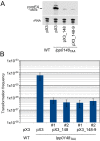
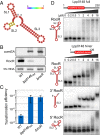
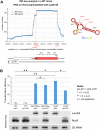
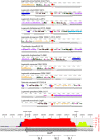
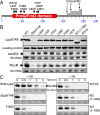




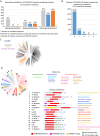
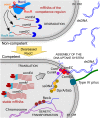
Similar articles
-
Silently transformable: the many ways bacteria conceal their built-in capacity of genetic exchange.Curr Genet. 2017 Jun;63(3):451-455. doi: 10.1007/s00294-016-0663-6. Epub 2016 Nov 8. Curr Genet. 2017. PMID: 27826682 Review.
-
Diverse conjugative elements silence natural transformation in Legionella species.Proc Natl Acad Sci U S A. 2019 Sep 10;116(37):18613-18618. doi: 10.1073/pnas.1909374116. Epub 2019 Aug 27. Proc Natl Acad Sci U S A. 2019. PMID: 31455740 Free PMC article.
-
The Legionella pneumophila genome evolved to accommodate multiple regulatory mechanisms controlled by the CsrA-system.PLoS Genet. 2017 Feb 17;13(2):e1006629. doi: 10.1371/journal.pgen.1006629. eCollection 2017 Feb. PLoS Genet. 2017. PMID: 28212376 Free PMC article.
-
Sequencing illustrates the transcriptional response of Legionella pneumophila during infection and identifies seventy novel small non-coding RNAs.PLoS One. 2011 Mar 3;6(3):e17570. doi: 10.1371/journal.pone.0017570. PLoS One. 2011. PMID: 21408607 Free PMC article.
-
ProQ/FinO-domain proteins: another ubiquitous family of RNA matchmakers?Mol Microbiol. 2017 Jun;104(6):905-915. doi: 10.1111/mmi.13679. Epub 2017 May 3. Mol Microbiol. 2017. PMID: 28370625 Free PMC article. Review.
Cited by
-
Small regulatory RNAs of oral streptococci and periodontal bacteria.Jpn Dent Sci Rev. 2021 Nov;57:209-216. doi: 10.1016/j.jdsr.2021.09.004. Epub 2021 Oct 23. Jpn Dent Sci Rev. 2021. PMID: 34745393 Free PMC article. Review.
-
Transposon Insertion Sequencing in a Clinical Isolate of Legionella pneumophila Identifies Essential Genes and Determinants of Natural Transformation.J Bacteriol. 2021 Jan 11;203(3):e00548-20. doi: 10.1128/JB.00548-20. Print 2021 Jan 11. J Bacteriol. 2021. PMID: 33168636 Free PMC article.
-
Biochemical and genetic dissection of the RNA-binding surface of the FinO domain of Escherichia coli ProQ.RNA. 2023 Nov;29(11):1772-1791. doi: 10.1261/rna.079697.123. Epub 2023 Aug 22. RNA. 2023. PMID: 37607742 Free PMC article.
-
Silently transformable: the many ways bacteria conceal their built-in capacity of genetic exchange.Curr Genet. 2017 Jun;63(3):451-455. doi: 10.1007/s00294-016-0663-6. Epub 2016 Nov 8. Curr Genet. 2017. PMID: 27826682 Review.
-
RNA Chaperones Hfq and ProQ Play a Key Role in the Virulence of the Plant Pathogenic Bacterium Dickeya dadantii.Front Microbiol. 2021 Jun 24;12:687484. doi: 10.3389/fmicb.2021.687484. eCollection 2021. Front Microbiol. 2021. PMID: 34248909 Free PMC article.
References
-
- Johnston C, Martin B, Fichant G, Polard P, Claverys J-P. Bacterial transformation: Distribution, shared mechanisms and divergent control. Nat Rev Microbiol. 2014;12(3):181–196. - PubMed
-
- Smith JM, Dowson CG, Spratt BG. Localized sex in bacteria. Nature. 1991;349(6304):29–31. - PubMed
-
- Seitz P, Blokesch M. Cues and regulatory pathways involved in natural competence and transformation in pathogenic and environmental Gram-negative bacteria. FEMS Microbiol Rev. 2013;37(3):336–363. - PubMed
Publication types
MeSH terms
Substances
LinkOut - more resources
Full Text Sources
Other Literature Sources
Molecular Biology Databases

